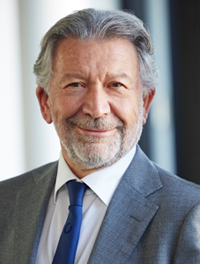Setting EASA’s priorities and monitoring its operations - ensuring EASA’s independence
The EASA Management Board is entrusted with the necessary powers to define EASA’s priorities, establish its budget and monitor the Agency’s operations to ensure that EASA is able to maintain the highest level of aviation safety and environmental protection in Europe while being independent from political and economic pressure.
EASA is the centrepiece of the European Union's strategy for aviation safety, meaning it has a broad mission requiring detailed planning, budget management and a transparent way to monitor and set priorities. EASA has a solid planning and reporting mechanism in place and provides planning and budgetary reports throughout the year, which it shares with the Management Board. The close link between EASA and its Management Board ensures that aviation safety and environmental protection related issues are addressed, tackled and solved in a timely manner, taking all opinions into consideration.
The EASA MB brings together representatives from the EASA Member States (EU Member States & EFTA states) and the European Commission. Seven third-country states and the EASA Stakeholder Advisory Body (SAB) with its members drawn primarily from the aviation industry, are also represented and take part as observers.
The Board meets on a regular basis and takes its decisions in support of the key principle and goal of ensuring aviation safety and environmental protection in Europe. Decisions taken by the MB are regularly published on EASA’s website.
To ensure that the Board keeps its independence, all representatives are vetted for any possible conflict of interest, both prior to taking up their roles and on a yearly basis.
- Visit EASA Pro to see what decisions have been taken over the years.
Meet the Management Board
The Chairperson and Deputy Chairperson, selected by its members, play a key role in the smooth running and functioning of the Board. The term of office of the Chairperson and Deputy Chairperson is four years, with the possibility to be extended once for a further four years.
Chairperson of the Management Board: Mr Piotr Samson
Piotr Samson, President of the Civil Aviation Authority of Poland since 2016, was elected as Chairperson of the Management Board of the European Union Aviation Safety Agency in 2019. With more than twenty years of professional experience including aviation and his involvement in the MB for a number of years, the MB benefits from his leadership and his in-depth knowledge.
“It is a great honour and privilege for me to chair such a distinguished body as the EASA Management Board. I primarily consider myself as a catalyst and a strong supporter of EASA’s strategic role in European and global aviation. For me EASA is an example of success that can be achieved through cooperation and due to common goals.
The two other non-executive positions that I hold in Eurocontrol and ECAC allowed me to see the European aviation policy in a comprehensive and objective way. I consider this unique and holistic perspective as a crucial asset for leading and supporting the Agency’s further development and as a key enabler of fruitful cooperation and success of its members.”
Deputy Chairperson of the Management Board: Mr Johann Friedrich Colsman
Johann Friedrich Colsman is Director General of Civil Aviation in the German Federal Ministry of Transport and Digital Infrastructure since 2018.
“In Aviation, safety comes first. The Management Board is assuring a joint understanding between Member States and supporting EASA in maintaining and meeting its ambitious targets.”
The Members
The Management Board consists of members nominated by each EASA Member State and the European Commission. Additionally, Member States can nominate up to two alternates, who represent the member in his or her absence. Each representative is appointed because of their knowledge, experience and commitment in the field of civil aviation. The term of office is four years and is extendable.
The Observers
Where appropriate, the Management Board may invite representatives of non-EASA European third countries as well as industry representatives to have observer status in the Management Board. Currently seven States have been granted observer status as well as four industry representatives from the EASA Stakeholder Advisory Body (SAB) to ensure a proper pan-European dimension, so as to facilitate the improvement of civil aviation safety throughout Europe.
Additionally, the Board may invite experts and persons whose opinion on particular issues might be of interest to attend meetings on a case by case basis.
Who can vote?
There are overall 29 votes (27 from each Member State & 2 from the European Commission).
Each designated member has one vote. Appointed members from the EFTA Member States do however not have voting rights, although these states are full members of EASA. Voting normally takes places in the Board meetings but can also be carried out by a written procedure.
- For a full list of members, observers and their alternates, visit EASA Pro.
Working together – Management Board & EASA’s Executive Director
 EASA’s Executive Director is appointed by the EASA Management Board. While he is independent in the performance of his duties, he reports to the Management Board on a regular basis on the Agency’s activities, updates on budgetary situation and requirements, raises awareness on current issues and developments and thereby gives the MB the necessary overview they need.
EASA’s Executive Director is appointed by the EASA Management Board. While he is independent in the performance of his duties, he reports to the Management Board on a regular basis on the Agency’s activities, updates on budgetary situation and requirements, raises awareness on current issues and developments and thereby gives the MB the necessary overview they need.
Apart from the regular updates, the Executive Director cooperates closely with the MB and the MB Chair on an ad hoc basis.
The Management Board secretariat
The MB Secretariat not only makes sure that the Management Board get together regularly, but also takes care of the many administrative and organisational aspects surrounding the functioning of the Management Board.
